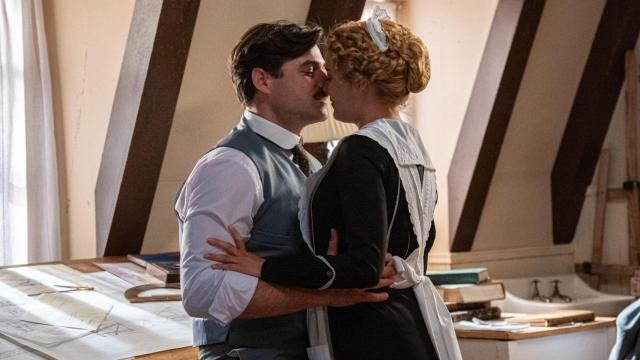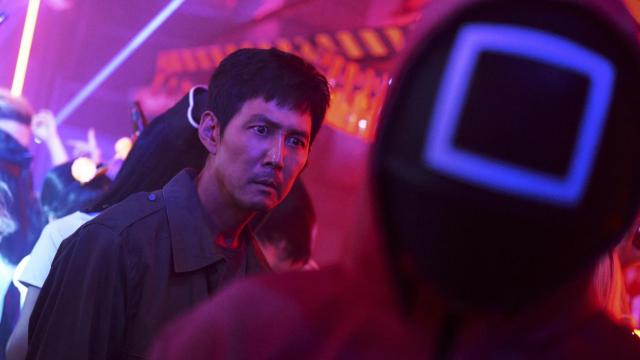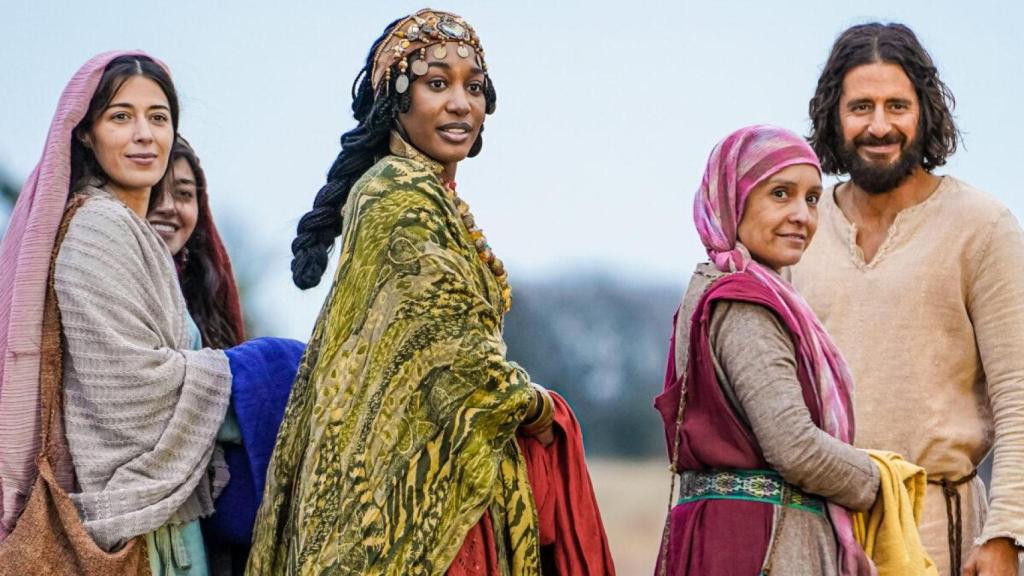
Women in 'The Chosen': the series leaves behind the archetypes and empowers characters like Mary Magdalene or Veronica
In Antiquity, the world was very masculine, but the series takes care to give greater prominence to its female characters.
As a reflection of the time they were describing, the biblical texts gave women a specific role in their context and, although at that time they were relegated to a rather secondary role -to put it generously-, the truth is that they had a lot of importance in the life of Jesus. Or, at least, that's how it's shown in The Chosen.
Saying that in Antiquity the world was predominantly male is an obvious statement, but it wouldn't be entirely fair to analyze the past with present-day eyes. That's why the series created by Dallas Jenkins takes enough care to go beyond what is written and teach viewers that the women who accompanied Jesus were key in history.
Furthermore, it also focuses on reflecting how Jesus treated them as equals at all times, even if that meant going against the imposed law.
Women in 'The Chosen'
Throughout its episodes, The Chosen shows that, although the time period reduced women to a place of servitude and little else, they were actually as welcome as anyone else in the group of people following Jesus.
One of the most striking examples that demonstrates this is seen in the series in episode 5 of season 3. At one point, it is stated that the laws of purity must be strictly followed and this implies that all women must stay away from other men when going through menstruation.
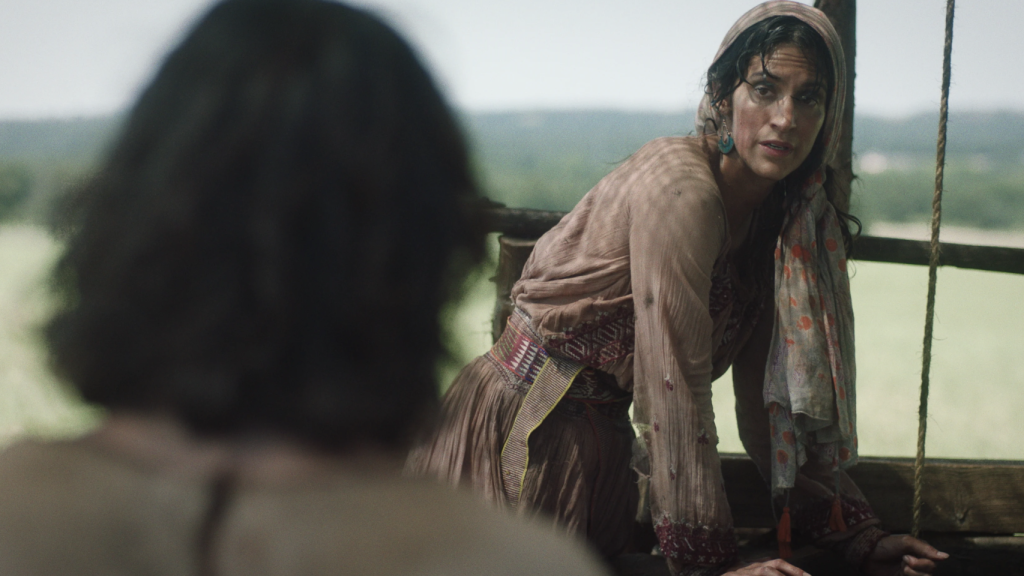
The scene of the woman at the well in 'The Chosen'
Other examples are when onscreen and meeting Jesus other women like Mary Magdalene, who is about to give up on herself, or Veronica, a woman who was also rejected due to a health condition that made her bleed abundantly. The scene where the latter approaches Jesus and he decides to heal her is one of the most emotional in the series.
These and other examples help not only to make the protagonist a more relatable character, but also show how Jesus always allowed them to approach him regardless of the imposed rules or such absurd beliefs as these women contaminating those they approached. Especially other men. And it also gives these women the place they deserve in a story they were also a part of.
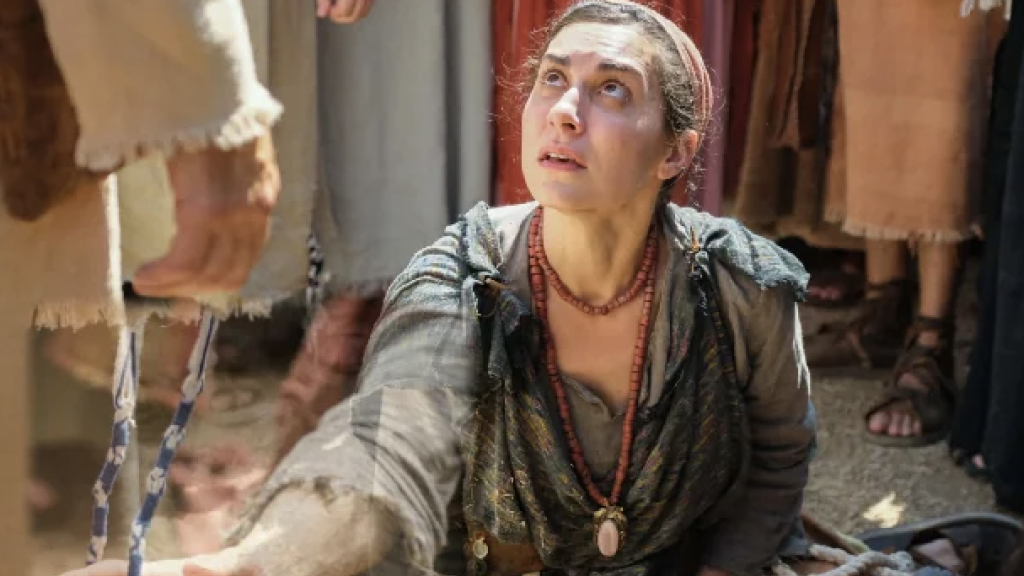
Veronica in a scene from 'The Chosen'
Considering that in that era Jewish women typically did not travel with men or leave behind their families, their presence in Jesus' inner circle was an anomaly. And although some like Mary Magdalene, Mary and Martha -sisters of Lazarus-; Mary, the wife of Cleophas; Mary, the mother of James and Joseph; Mary -mother of Jesus- and Salome stood out, the fact is that there are gospels like that of St. Luke that say there were "many others".
Ultimately, perhaps one of the great achievements of The Chosen is that it manages to show us these women as equals among the apostles or the men who accompanied Jesus. They were all healed as well and, just like it happened with the apostles, their lives changed when they approached him.
And although the gospels hardly focus on narrating their contributions, the truth is that they were present in the most crucial moments. That's why it's important for The Chosen to choose to give them their space so that we get to know them and to allow them to shine. It is a success how it allows them to develop their own story as individuals in a context that relegated them to conform to remaining on the margins.
The fourth season
While we wait for more news about the fifth season of The Chosen, the fourth installment has already premiered and is available in Spain on the official series app and also on the acontra+ catalog.
Tráiler de la temporada 4 de 'The Chosen'
In this installment Jesus is tired and overwhelmed, and needs to rest. The story is getting closer to Jerusalem, to what is known to be coming. Jesus is increasingly frustrated and sad. Not because he is approaching death, but because of the reasons why he must die.
From the religious leaders of his faith, through the holy city of Jerusalem, to his own friends and followers, people are not understanding his mission. For this, he must allow painful things, and even set in motion certain confusing or bittersweet events, to accelerate the outcomes that will lead to Easter.
Realms in opposition. Rival rulers. Jesus' enemies draw near as his followers struggle to keep pace, leaving Him alone with the burden. Threatened by Jesus' growing influence, the religious leaders do the unthinkable: ally with their Roman oppressors. As the seed of betrayal is sown and opposition to Jesus' message turns violent, he has no choice but to demand his followers rise up.
*This article has been automatically translated using artificial intelligence


